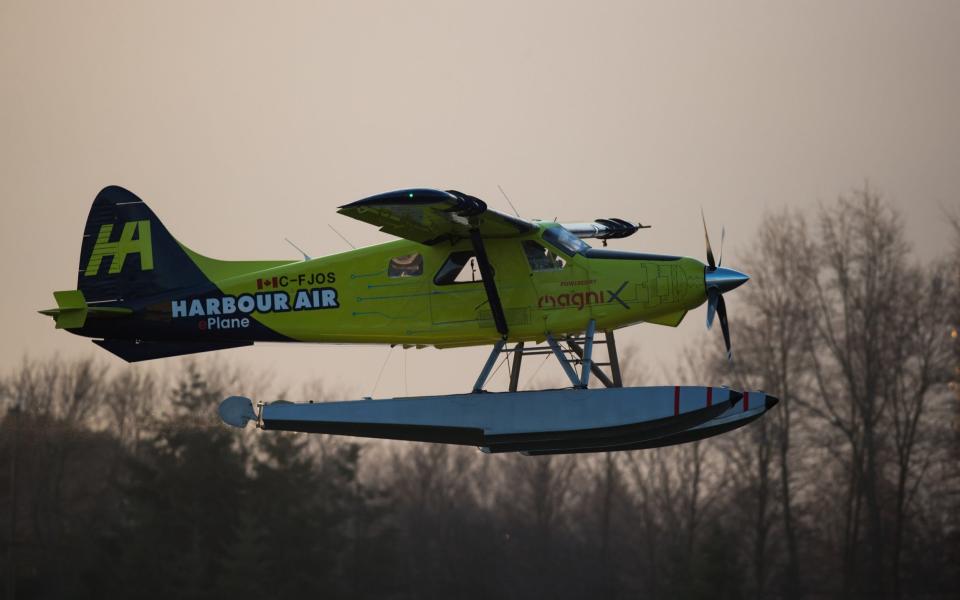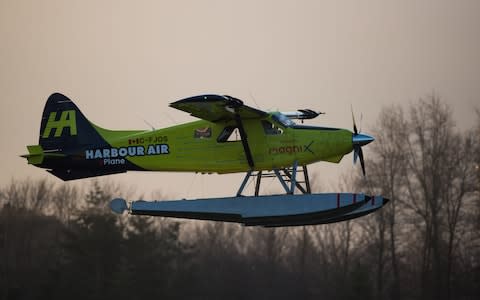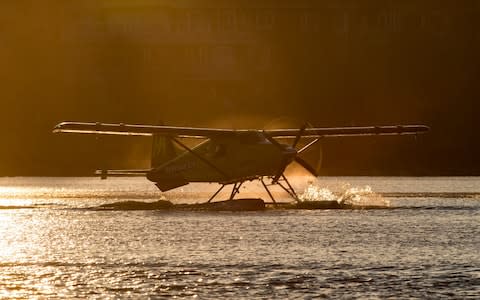'World's first' fully-electric commercial aircraft takes flight

The world’s first fully electric commercial aircraft took its inaugural test flight in Vancouver on Tuesday in what has been described as "the start of the third era in aviation."
"This proves that commercial aviation in all-electric form can work," said Roei Ganzarski, chief executive of Seattle-based engineering firm magniX.
The company designed the plane's motor and worked in partnership with Harbour Air, which ferries half a million passengers a year between Vancouver, Whistler ski resort and nearby islands and coastal communities.
The 15 minute test flight involved a 62-year-old, six-passenger DHC-2 de Havilland Beaver seaplane retrofitted with an electric motor.

Greg McDougall, the chief executive of Harbour Air, flew the plane.
"For me that flight was just like flying a Beaver, but it was a Beaver on electric steroids. I actually had to back off on the power," he said.
As well as fuel efficiency, the company said it would save millions in maintenance costs, as electric motors require "drastically" less upkeep, McDougall said.
However, Harbour Air will have to wait at least two years before it can begin electrifying its fleet of more than 40 seaplanes.
In Ottawa, Transport Minister Marc Garneau told reporters ahead of the maiden flight that he had his "fingers crossed that the electric plane will work well."
If it does, he said, "it could set a trend for more environmentally friendly flying."
Battery power is also a challenge. An aircraft like the one flown on Tuesday could only fly about 100 miles on lithium battery power, said Ganzarski.

While that's not far, it's sufficient for the majority of short-haul flights run by Harbour Air.
"The range now is not where we'd love it to be, but it's enough to start the revolution," said Ganzarski, who predicts batteries and electric motors will eventually be developed to power longer flights.
While the world waits, he said cheaper short-haul flights powered by electricity could transform the way people connect and where they work.
"If people are willing to drive an hour to work, why not fly 15 minutes to work?" he said.
Commercial flying accounts for around 2pc of global carbon emissions and 12pc of transport emissions, according to the Air Transport Action Group.

Many businesses are experimenting with electrical motors in a bid to cut down on the emissions from commercial flights.
Rolls-Royce announced in June that it had bought Siemens’ electric and hybrid-electric “eAircraft” division in a deal understood to be worth around €50m (£42m).
Range remains a key limitation of electric aircraft, however. Mr Ganzarski said that planes similar to the one flown on Tuesday can only fly about 100 miles on lithium battery power.
"The range now is not where we'd love it to be, but it's enough to start the revolution,” he said.

 Yahoo Finance
Yahoo Finance 